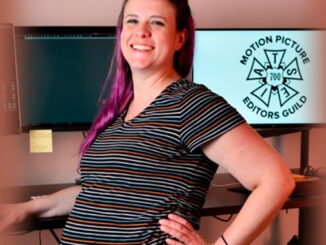
I recently took a CPR class at the Editors Guild offices in LA, which was organized through The Wellness Program. I felt compelled to take the class after a colleague saved the life of our color timer after he had a heart attack during a meeting on Dunkirk.
The reality is that in post-production we often work long hours under stressful conditions. As we get older, that added stress can heighten our high blood pressure and increase the chances of a heart attack. We also work in isolation, where it is difficult for co-workers to be aware of such an occurrence or, if they are, they may not have the training to administer CPR.
Did you know that sudden cardiac arrest is one of the leading causes of death in the United States? Cardiac pads or AED’s prove useful in such cases. However, not all cardiac pads can help resuscitate someone, especially the pediatric ones. One must know that pediatric AED pads should never be used on an adult victim as they are not designed to deliver an efficient level of shock for adult cardiac arrest patients.
Unfortunately, most people who suffer a cardiac arrest outside of a hospital do not get cardiopulmonary resuscitation (CPR) from a bystander, which significantly lessens their chances of survival. And while people can help themselves prevent this, be it by asking questions like “does sleep apnea cause heart disease” and the like or by taking active steps to change their diet and the like, knowing how to do CPR is still a vital skill to have.
Here are five great reasons to get your CPR training now:
- CPR saves lives. More than 300,000 people have cardiac arrests in the United States every year. Sudden cardiac arrest occurs when an electrical rhythm problem occurs and the heart is no longer able to pump blood effectively to the rest of the body. You might see a person suddenly collapse, lose consciousness and stop breathing. The longer the body goes without circulation, the lower the chance of survival. By performing CPR, you are able to help the person’s blood keep circulating until an ambulance arrives and more advanced tools can be used. We know that the chance of surviving a sudden cardiac arrest increases significantly – by more than double – when CPR is started early.
- CPR is not performed enough. Are you surprised to learn that bystander CPR is done in less than half of all out-of-hospital cardiac arrests? National statistics have shown that only 15 to 30 percent of people who experience sudden cardiac arrests outside of hospitals receive bystander CPR. When people are asked why they would not give CPR, a very common answer is that they have never received training. Other concerns – such as doing harm to the person, doing harm to oneself, legal risks or concerns about infection – often diminish once people learn proper CPR techniques.
- You don’t have to do mouth-to-mouth resuscitation. Another reason people report they do not perform CPR is because of concerns about performing mouth-to-mouth resuscitation. In 2010, the guidelines for performing CPR were changed, and they now say that those who do not feel comfortable, or who have not received formal training, should attempt hands-only CPR. They advocate performing chest compressions even without breathing assistance. Hands-only CPR has been shown to be just as effective for many adults who experience sudden cardiac arrest.
- Hands-only CPR is easy to learn. To perform hands-only CPR, place the heel of your hand on the center of the victim’s chest. Take your other hand and place it on top of the first, interlacing your fingers. Press down on the chest about two inches and release. You want to repeat this quickly, at least 100 times a minute. And don’t stop doing CPR until emergency services arrives at the scene; recent studies have found that people may have a better chance of surviving with normal brain function when CPR is continued up to 38 minutes or longer. There are many places to find online videos, as well as formal classes, to see CPR performed correctly. The goal is to find the learning technique that works best for you so that you are comfortable if you are in a situation where you can save a life!
- More than 85 percent of cardiac arrests take place at home. So take the challenge. If you don’t know CPR, learn CPR and gain the confidence in knowing that if you are ever needed, you too can save a life!
Derrick Mitchell
Picture Editor
Simi Valley, CA




